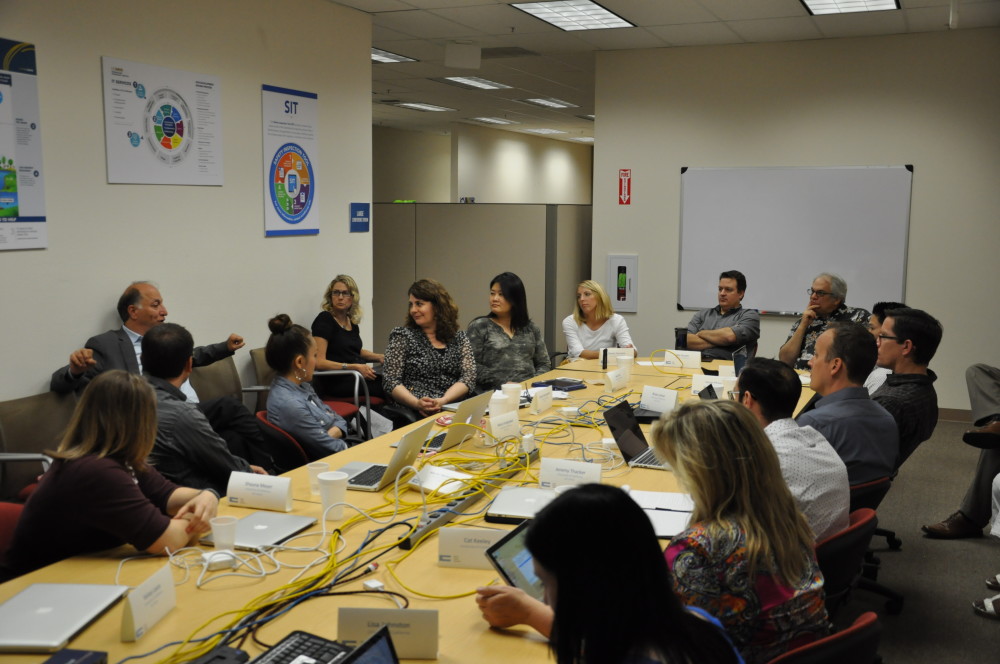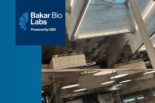Posted by Shohreh Bozorgmehri, director, Student and Academic Services Division, UCI Office of Information Technology, and Safa Hussain, executive director, UC Risk and Safety Solutions. Eleven representatives from the UC Irvine Office of Information Technology visited the UC Risk and Safety Solutions department, located at Davis, for half a day in April. Our goal was to connect our Agile teams – which had developed independently over the years – and learn from each other. Campus-to-campus collaboration is critical for promoting best practices across UC. Starting with campus visits is an excellent way to directly connect individuals and accelerate the dissemination of innovative new ideas.
We also hope to encourage others within the UC system to consider visiting their intercampus colleagues and share knowledge. The UCD-UCI visit was a result of a previous cross-campus collaborative venture through which Shohreh Bozorgmehri, director of the Student and Academic Services Division at the UCI Office of Information Technology, saw an opportunity to bring the teams from both campuses together to collaborate.
First the tour
The day started with a walking tour with Safa Hussain, executive director of UC Risk and Safety Solutions. Several things stood out in contrast to the typical university development shop: Workspaces were designed for improved communication, featuring co-located teams, low or no walls separating team members, and centrally mounted TVs in many rooms. Whiteboards and team collaboration artifacts lined the walls. The group reflected on the many similarities between campuses. For example, years ago, the Irvine team removed long-standing cubicle walls, broke down walls, and joined adjacent offices.
Half of the reception room for UC Risk and Safety Solutions was converted into a meeting room for daily standups, giving visitors and job applicants a chance to observe individuals and team interactions. Safa noted that this first impression is a great recruiting tool: The opportunity to see teams in action draws highly collaborative applicants to his organization.
On to processes and tools
While Agile emphasizes individuals and interactions over processes and tools, both campuses agreed the latter are critical to improving team effectiveness. Tools like Trello, JIRA, Kanbanize, ServiceNow, and physical boards radiate information and reduce slowdowns stemming from lack of communication. Prominently featuring these tools using team TVs and projectors enhances sprint planning sessions and promotes healthy retrospectives about project status.
As the day progressed, the Irvine team met with each UC Risk and Safety Solutions team to discuss methodologies to deliver products and services. Most use Scrum, a simple Agile framework originally formalized for software development projects. It also works well for any complex, innovative scope of work. Other more operationally focused teams use a method for managing knowledge work called Kanban, which draws inspiration from the Toyota Production System and lean manufacturing. Kanban emphasizes just-in-time delivery while not overloading team members.
All Scrum teams have Scrum masters, who serve as the facilitator for both the product owner and the development team. Scrum masters at UC Risk and Safety Solutions focus almost exclusively on this role, providing full support so that others may better achieve success in their work. Scrum masters at UCI generally take on an additional role, most often software development. The UCI approach helps teams adopt Scrum by not requiring significant role changes or new positions.
The product owner is the one person responsible for a project’s success. The product owner leads the development effort by conveying his or her vision to the team, outlining work in the product backlog, and prioritizing it based on business value. Ideally, a leader from the business/client area fills this role; however, it is not uncommon for user experience designers, business analysts, or even the team supervisor to have this role.
Organizational structure
Perhaps the biggest difference between locations was that UC Risk and Safety Solutions has very rapidly expanded from 7 to 55 employees in six years. Their organizational structure is designed to adapt readily to serve new projects and services. As new self-organizing teams form in response to new demands, their first task is to give themselves a name. Creating new teams and physically moving offices is simplified by having open and flexible furniture, in addition to using IP based phones like Skype. UC Risk and Safety Solutions has built a flat organizational structure, maintaining an approximate 22-to-1 individual-to-supervisor ratio. Attendees reflected on how successful Scrum teams can take shape in both traditional/hierarchical and flat organizations.
Continuous improvement
Training, learning, and growing are key for both campuses in adopting Scrum and continually improving. UC Risk and Safety Solutions has brought trainers and consultants on-site to train large groups at a time, hastening the spread of Agile best practices. UCI holds regular meetings where Scrum masters discuss recent challenges, facilitation tools, and process improvements.
Our take aways
During the short five hours together we covered many topics and generated excitement. Attendees returned to their regular work with many ideas for improvement, including mob/pair programming, tools for UX design, devops, training, flat organizational structures, self-organization, 360 degree reviews, and even whiteboard paint.
We know this is just the beginning of a dialog between campuses around Agile best practices.







I can only speak from my own experience, but I take issue with the statement “however, it is not uncommon for user experience designers, business analysts, or even the team supervisor to have this role” regarding who is the product owner.
In some circumstances, a person internal to the IT department might act as a proxy for the true product owner, but the scrum process cannot be effective without someone on the client side taking responsibility for identifying priorities and relaying functionality requirements. There must be a continual exchange of ideas between the team and the product owner.
This type of information sharing & support of each other as we develop more campus-led shared services is the type of leadership we hope to encourage across the system. Sessions like these promote working relationships between locations and increase our ability to build strong, diverse & agile teams that can respond to the changing needs of our campus & health system environments. Kudos to the teams on your initiative & drive for excellence!
Tom
Hi Tim,
I think you raise an interesting point: the effectiveness of Scrum teams depends in part on the quality of communication between Scrum team and business stakeholders. If we aren’t talking with the business side, then we make sub-optimal priority decisions and will likely end up with a product that is less useful to users.
My experience on the UC Recruit team has highlighted the importance of having a Product Owner who is active in conversations with the business side. While our Product Owner resides at UC Irvine’s Office of Information Technology, she is in constant communication with stakeholders from across the system including the UC Recruit Governance Board.
The UC Recruit Governance Board is composed of Academic Personnel and Diversity officers from the 10 campuses plus the Office of the President. Periodically the Governance Board will prioritize broad project initiatives while a smaller Subject Matter Expert group will define and prioritize individual user stories. This provides our team with an important reassurance that we’re focused on delivering the right functionality — one essential element of highly effective teams.